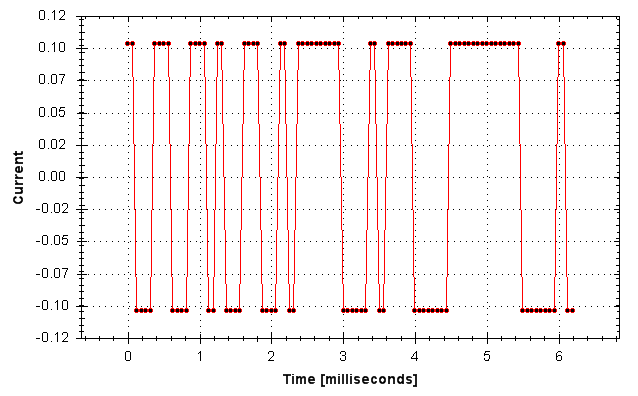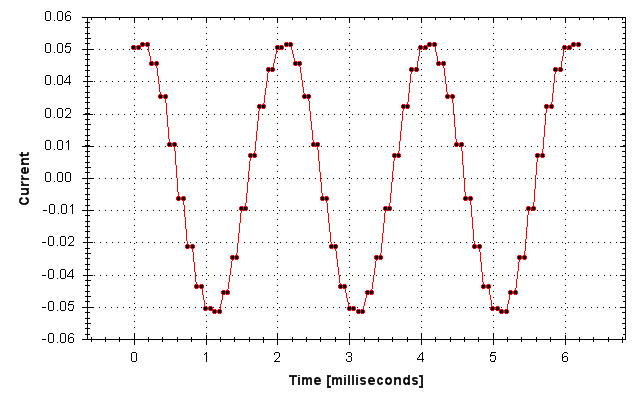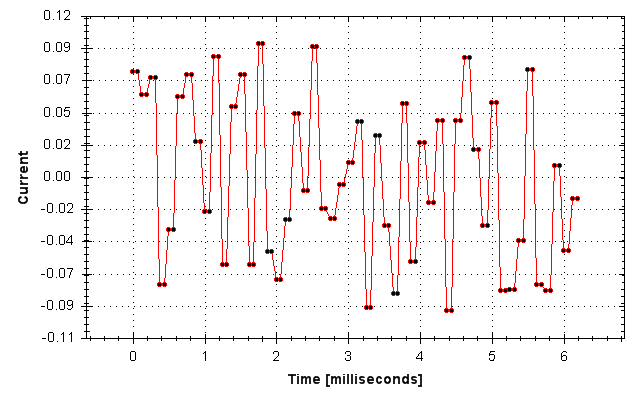Description
AXIS#.BODE.MODE sets the mode of the excitation. The excitation can be set to the modes shown in the table below. AXIS#.BODE.MODE is always set to None when Ethernet![]() Ethernet is a large, diverse family of frame-based computer networking technologies that operate at many speeds for local area networks (LANs) communication is disconnected. The peak amplitude of the excitation is set by either AXIS#.BODE.IAMP or AXIS#.BODE.VAMP (depending on AXIS#.BODE.INJECTPOINT).
Ethernet is a large, diverse family of frame-based computer networking technologies that operate at many speeds for local area networks (LANs) communication is disconnected. The peak amplitude of the excitation is set by either AXIS#.BODE.IAMP or AXIS#.BODE.VAMP (depending on AXIS#.BODE.INJECTPOINT).
AXIS#.BODE.MODE is subject to a watchdog timer (AXIS#.BODE.MODETIMER) as follows:
- If AXIS#.BODE.MODETIMER is 0, then AXIS#.BODE.MODE is not affected.
- If AXIS#.BODE.MODETIMER is set to a value greater than 0, then AXIS#.BODE.MODE will be set to 0 (None) after the AXIS#.BODE.MODETIMER time milliseconds.
- If AXIS#.BODE.MODE is a nonzero value, and you reset AXIS#.BODE.MODE to another nonzero value, you will reset the watchdog timer. This mechanism is intended to turn off the excitation signal if you lose communication with the drive.
AXIS#.BODE.MODE Description Comments 0 None Turns all excitation off
Uses Pseudo Random Binary (PRB) excitation. PRB is a signal that is always +/- peak amplitude, varying only in phase.
1 PRB PRB excitation results in a flat excitation frequency spectrum. PRB results in a high peak excitation amplitude, which can help minimize friction in a frequency response test.
PRB excitation repeats every
(2^AXIS#.BODE.PRBDEPTH) /AXIS#.BODE.EXCITEGAP drive samples. This repetition can be used to reveal the effects of friction.
2 Sine Uses Sine excitation 3 Noise Uses random noise excitation. Noise is a random number generator that varies between +/- peak amplitude. 4 Offset Sets a torque Torque is the tendency of a force to rotate an object about an axis. Just as a force is a push or a pull, a torque can be thought of as a twist offset equal to AXIS#.BODE.IAMP
5 Stability Check When BODE.MODE 5 is active, the drive monitors current command and velocity feedbacks to see if they exceed AXIS#.BODE.IFTHRESH and AXIS#.BODE.VFTHRESH to determine if the axis is stable. 6 Chirp Excitation When BODE.MODE 6 is active a chirp excitation is used from AXIS#.BODE.CHIRP.STARTFREQ to AXIS#.BODE.CHIRP.ENDFREQ. The chirp time is defined by AXIS#.BODE.CHIRP.TIME. Example
Set AXIS1.BODE.MODE to PRB:
--> AXIS1.BODE.MODE 1Get AXIS1.BODE.MODE (already set to PRB):
--> AXIS1.BODE.MODE 1
PRB excitation:

Sine excitation:

Noise excitation:

Versions
Action Version Notes Implemented 02-00-00-000 General Information
Type
Read/Write
Description
Sets the mode of the excitation.
Units N/A Range
0 to 5
Default Value
0
Data Type
Integer
Stored in Non-Volatile Memory
No
Variants Supported
All variants are supported.
Related Topics
Using the Performance Servo Tuner
Using the Performance Servo Tuner: Advanced






